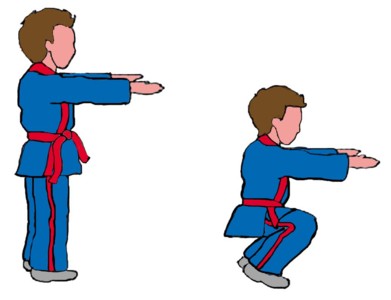1. Stand on one leg.
2. Sink down by breaking at the hips and knees simultaneously. Raise the arms, flex the hip of the nonworking leg, keep the chest up, and push through the heel.
3. Descend until the desired depth is reached and then return to standing position.
Primary: Quadriceps (rectus femoris, vastus lateralis, vastus medialis, vastus intermedius), gluteus maximus
Secondary: Hamstrings (biceps femoris, semitendinousus, semimembranosus), adductor magnus, adductor longus, adductor brevis, gluteus medius, gluteus minimus, deep-hip external rotators.


 Good leg exercises using your body weight.
Good leg exercises using your body weight.